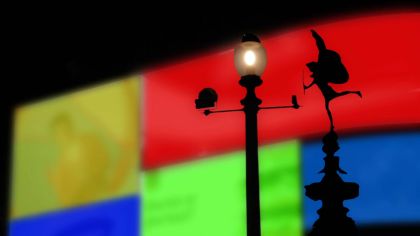
Piccadilly Circus at night with Eros Statue in silhouette time lapse. Advertising screens are blurred and coloured for replacement. 15 seconds HD & web sizes only
To buy the Web (320 x 180 px) version click here
For a watermarked preview click here and use the download link
More about Piccadilly Circus
Piccadilly Circus is a road junction and public space of London’s West End in the City of Westminster, built in 1819 to connect Regent Street with Piccadilly. In this context, a circus, from the Latin word meaning “circle”, is a round open space at a street junction.
Piccadilly now links directly to the theatres on Shaftesbury Avenue, as well as the Haymarket, Coventry Street (onwards to Leicester Square), and Glasshouse Street. The Circus is close to major shopping and entertainment areas in the West End. Its status as a major traffic junction has made Piccadilly Circus a busy meeting place and a tourist attraction in its own right. The Circus is particularly known for its video display and neon signs mounted on the corner building on the northern side, as well as the Shaftesbury memorial fountain and statue of Eros. It is surrounded by several notable buildings, including the London Pavilion, Criterion Restaurant and Criterion Theatre. Directly underneath the plaza is Piccadilly Circus tube station, part of the London Underground system.
At the southeastern side of the Circus, moved after World War II from its original position in the centre, stands the Shaftesbury Memorial Fountain, erected in 1892–1893 to commemorate the philanthropic works of Lord Shaftesbury, a Victorian politician, philanthropist and social reformer. The subject of the Memorial is the Greek god Anteros[citation needed] and was given the name The Angel of Christian Charity[citation needed] but is generally mistaken for his brother Eros.

